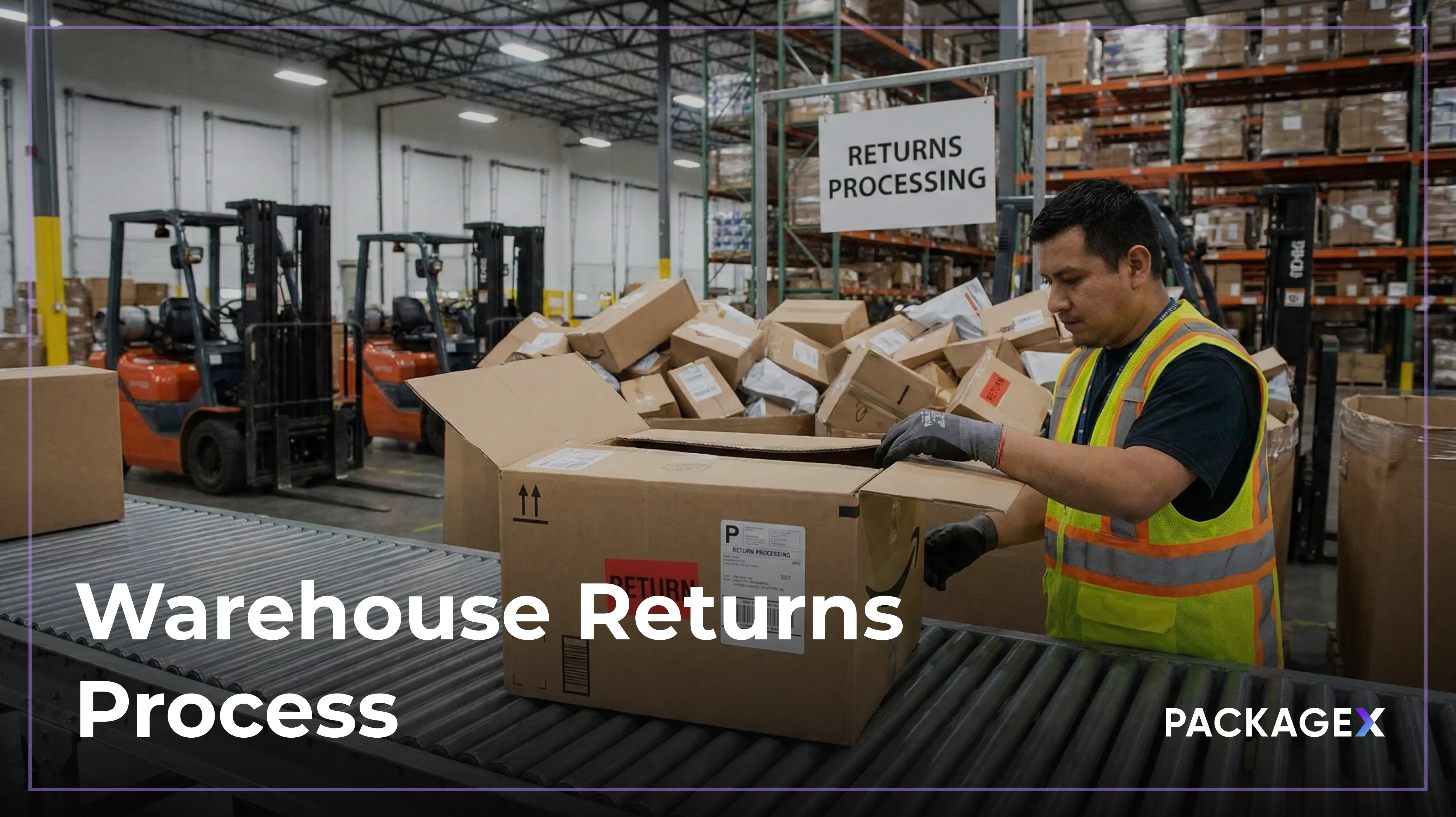In logistics, timing and accuracy can make or break operations. That’s where the ASN comes in. So, what does ASN stand for? It’s short for Advanced Shipping Notice. In simple words, it’s an electronic document that suppliers send to buyers before goods arrive.
An ASN number contains details like item counts, packaging, and delivery schedules. For a warehouse, this means teams can prepare staff, space, and inventory management systems ahead of time. Without it, the receiving process becomes challenging, causing delays and errors. With it, businesses get efficiency, visibility, and accuracy baked into their daily operations.
This matters more than ever. The cargo shipping market is projected to reach USD 18.47 billion by 2030, growing at 4.63% CAGR from 2025. With rising volumes, ASN in logistics is no longer optional. It’s a vital link connecting suppliers, carriers, and buyers in fast-moving supply chains.
What is an ASN?
An Advanced Shipping Notice (ASN) is an electronic document that a supplier sends to a buyer before a shipment arrives. It gives the receiving team a clear picture of what to expect. The list includes product descriptions, quantities, carrier details, and the estimated delivery date. With this information, warehouses can prepare staff and space in advance. This also helps reduce delays when goods arrive at the dock.
Think of the ASN as a digital heads-up that connects purchase orders with the actual shipment. The ASN is sent in advance, unlike a packing slip or bill of lading, which typically accompanies the shipment itself. This proactive step helps businesses confirm accuracy and update inventory systems. This also ensures that supply chains run smoothly.
How does an ASN Work?
An advance shipping notice is more than just a heads-up. It’s a structured process that helps both the sender and receiver stay aligned.
Here’s how it typically flows in practice.
1. Preparation:
Once a supplier finishes packing an order, they create an ASN. This digital document includes shipment details. Such as purchase order number, carton counts, SKUs, dimensions, and tracking information. It’s the starting point of the advance shipping notice process flow.
2. Transmission:
The ASN is sent electronically, most often using EDI 856. This standardized format allows seamless electronic data exchange with various systems. Such as ERP, WMS, or even SAP ASN integration. Some companies also use XML or API connections, but EDI remains the most common method.
3. Pre-arrival planning:
With the ASN in hand, the buyer’s warehouse team can prepare before the truck arrives. Staff can schedule labor, assign dock space, and update inventory systems. This means faster warehouse receiving and less confusion on the floor.
4. Verification:
Once the shipment shows up, the ASN acts as a checklist. Workers scan barcodes and compare physical items against the electronic record. Any discrepancies, like missing cartons or incorrect quantities, are caught immediately. This plays a huge role in eliminating downstream errors.
By automating this workflow, an ASN turns a potentially chaotic handoff into an efficient routine.
[video:https://www.youtube.com/watch?v=z_pnr1GY_1w]
Key Components of an ASN
An Advance Shipping Notice (ASN) is more than a heads-up about a delivery. It’s a structured document that gives warehouses the exact details they need to prepare. A well-organized advance shipping notice format often includes:
- Shipment Information: An ASN number, shipment ID, ship date, and carrier tracking details. These identifiers help both sender and receiver stay aligned.
- Sender and Receiver Details: Ship-from and ship-to addresses along with contact information.
- Order References: Purchase order numbers and related identifiers that tie the shipment back to the original order.
- Product Details: SKUs, product descriptions, and quantities are listed. They tie to barcodes like UPC or GTIN codes. To speed up scanning and ensure precise inventory updates.
- Packaging Details: Information about pallets, cartons, dimensions, and weights. Which helps plan warehouse space and labor.
- Handling and Compliance: Special storage instructions or customs-related notes for regulated shipments.
These ASN data fields create a reliable advance shipping notice template. That ensures shipments arrive with fewer errors and receiving teams can work efficiently.
Core Functions of an ASN
An Advanced Shipping Notice (ASN) does more than alert someone that goods are on the way. It plays several roles that keep operations smooth and predictable across the supply chain.
1. Shipment Tracking and Visibility
An ASN gives businesses a clear view of what’s being shipped, in what quantity, and when it will arrive. This visibility helps warehouses prepare space, plan inventory, and avoid last-minute surprises. Real-time tracking data improves overall ASN process flow and reduces bottlenecks in shipping.
2. Delivery Scheduling
Shipment details provided ahead of time give warehouse managers an edge. They can allocate staff and equipment where it’s needed most. For instance, a fulfillment center expecting several pallets can assign more workers for that shift. This can result in saving time and labor costs.
3. Order Verification
An ASN acts as a digital checklist. By comparing the notice with the purchase order and packing list, teams can quickly verify accuracy. This minimizes errors, reduces returns, and keeps customers satisfied.
4. Compliance
ASNs support logistics compliance by including essential data for customs, audits, and reporting. They also improve communication between partners. This ensures every stakeholder works with accurate, shared information. This builds trust and supply chain transparency.
The Role of EDI in ASNs
Electronic Data Interchange (EDI) enables businesses to exchange essential documents. Such as orders, invoices, and shipping notices electronically. It eliminates manual data entry and paperwork. It also allows faster and more accurate information exchange between trading partners.
In ASN, EDI ensures that suppliers and buyers receive shipment information before delivery.
- What is EDI:
A standardized digital system that transmits structured data between business systems. - Key ASN EDI documents:
- EDI 850: Purchase Order
- EDI 856: Advanced Shipping Notice (ASN)
- EDI 810: Invoice
- EDI 940/945: Warehouse Shipping Order and Confirmation
- Integration:
Platforms like SAP ASN integration or WMS ASN link EDI data with ERP and warehouse systems. This helps maintain accuracy and consistency across operations. - Benefits:
Improved order accuracy, faster processing times and reduced manual errors. All of this results in enhanced visibility across the supply chain.
An EDI Advance Shipping Notice (ASN) creates a seamless data flow between systems. That supports efficient logistics management and stronger supplier-buyer coordination.
Benefits of Using ASNs
An Advanced Shipping Notice (ASN) helps businesses stay ahead of every delivery. It keeps operations running smoothly by sharing shipment details before goods arrive.
Here’s how it makes a difference:
- Improves efficiency: ASNs speed up warehouse operations by giving teams a heads-up on what’s coming. Staff can plan unloading and storage in advance, reducing downtime and delays.
- Enhances inventory accuracy: Match shipment details with ASN data. Stock updates become quicker and mistakes are fewer. This leads to better order fulfillment and fewer returns.
- Speeds up the receiving process: Instead of scrambling when trucks arrive, warehouse teams can scan barcodes or match SKUs against the ASN cutting check-in time dramatically.
- Reduces costs and errors: Fewer manual entries mean fewer mistakes. That translates to lower labor costs and smoother workflows across departments.
- Builds stronger supplier-buyer relationships: Transparency builds trust. Accurate shipment data keeps everyone on the same page. That clarity reduces mistakes and strengthens partnerships.
Overall, the ASN benefits every part of the supply chain by improving logistics efficiency.
Challenges of Using ASNs
Even though advanced shipping notices make logistics smoother. They come with a few real-world challenges:
- High implementation costs: Setting up EDI or warehouse management systems can be expensive. Especially for small and mid-sized businesses. These system costs often include software, integration, and training.
- Integration difficulties: ASNs must connect with existing ERP and WMS platforms. When systems don’t sync properly, data flow breaks, causing shipment and tracking problems.
- Data errors and inconsistencies: Incorrect item details or quantities lead to supply chain disruptions and inventory mismatches. A small data error can delay entire shipments.
- Staff training and alignment: Employees need clear training to manage ASN workflows. Without it, errors pile up, slowing down warehouse operations.
- Supplier compliance issues: Not all suppliers use compatible systems or follow standard ASN formats. This creates gaps in visibility and coordination.
ASN in B2B and Ecommerce
Advanced Shipping Notices (ASNs) keep B2B transactions organized. They also make e-commerce fulfillment more predictable. They give suppliers and distributors visibility into what’s being shipped. When it will arrive, and what resources are needed to receive it.
- Ecommerce Fulfillment: In online retail, ASNs help warehouses prepare for incoming goods. They allow teams to plan storage space, schedule staff, and update inventory systems before the shipment arrives. This cuts down on delays and reduces receiving errors.
- B2B Supply Chains:ASNs help businesses coordinate shipments with production schedules. In industries such as retail, distribution, and just-in-time manufacturing. When shipment details come in advance, buyers align deliveries with demand. This results in fewer delays and lower costs.
- Real-World Example: A wholesaler that uses ASN in shipping and ASN in warehouse systems can process inbound orders faster and keep inventory levels accurate.
By integrating ASN practices, companies strengthen supply chain visibility.
Best Practices for Implementing ASNs
Getting the most out of an Advanced Shipping Notice (ASN) depends on accuracy, timing, and smart use of technology.
Here are practical steps to help your team implement ASNs effectively:
- Ensure accurate data: Every detail in your ASN matters. Double-check shipment contents, quantities, and tracking numbers before sending. Inaccurate ASNs can slow down warehouse operations and cause unnecessary returns.
- Use standardized formats: Follow the EDI 856 format when possible. Standardization makes your ASN clear and consistent. It helps suppliers, carriers, and warehouse systems connect without friction. That means fewer errors and less time spent on manual fixes.
- Integrate with ERP or WMS: Connect your ASN process to your Enterprise Resource Planning (ERP) or Warehouse Management System (WMS). Automation keeps inventory data consistent and eliminates double entry.
- Send ASNs promptly: Deliver your advanced shipping notice as soon as goods are shipped. This gives receiving teams time to schedule labor and prepare storage space.
- Add barcodes or scannable labels: Use barcode labels for faster check-ins and error-free verification. Scanning improves visibility across your supply chain.
How PackageX Streamlines Advanced Shipping Notice (ASN) Workflows?
Here’s how PackageX brings clarity and speed to ASN and PO workflows:
Vision-Driven Capture & Automation
PackageX uses computer vision and AI scanning to extract data from shipping labels, bills of lading, and package barcodes. This means you don’t have to type every detail yourself. The platform digitizes attributes like SKU, weight, dimensions, and tracking numbers in seconds.
Real-Time Visibility & Error Reduction
With PackageX, you see inbound ASN data as soon as it’s captured. That means if a packing slip says 100 units but the actual number arrives as 90, you’ll spot the mismatch early. Because PackageX delivers 99% scanning accuracy, discrepancies shrink and manual corrections drop.
Seamless Integration with ERP / WMS
PackageX APIs and SDKs let your existing ERP or WMS sync automatically. Once the ASN is digitized, data flows into your backend systems without double entry. The ASN system is directly tied to your core software. This connection makes reconciliation smoother, cuts down mismatches, and improves purchase order automation.

_-option%202.avif)


